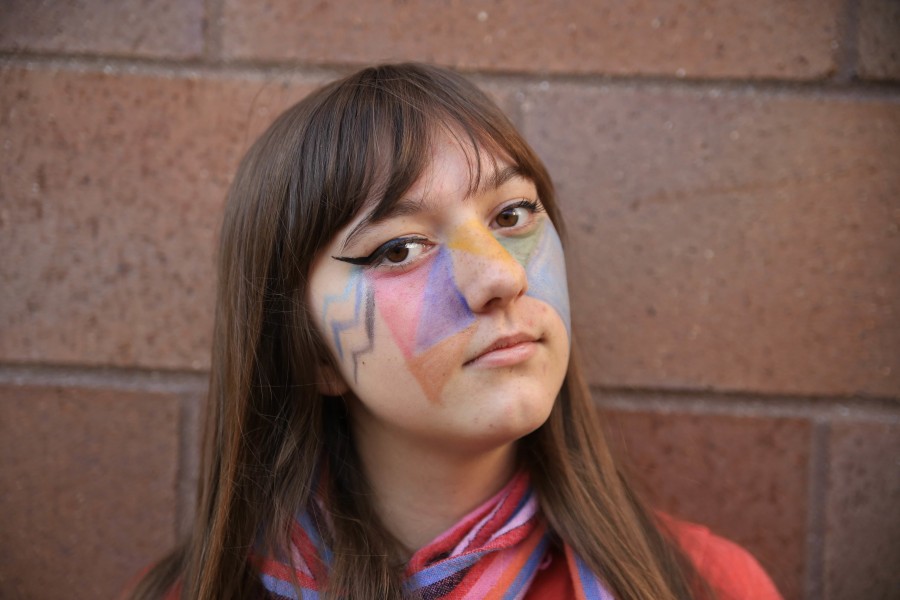Life in color
Sophomore Pearl Slayton has neurological rarity called synesthesia
Sophomore Pearl Slayton was listening to the Steven Universe soundtrack when pink flashed in her mind. As the melody changed, sparks of emerald green and flecks of light blue began to blossom in her brain.
Her attention to detail and color is hard to miss, but she has a deeper understanding than most people because of her synesthesia.
Synesthesia is known as a “blending of the senses.” Colors appear in the mind when various things happen. People with this can see colors in situations or objects that shouldn’t have color, like people or songs. Different colors trigger in the person’s mind, or outside in the real world.
“Synesthesia is a neurological situation where different sensory stimuli responses get crossed in their pathways,” doctor Brian L. Roscoe said. “There are numerous references to this condition. Commonly this involves primary pathways leading to a secondary pathway of sensory stimulation. References can be found commonly in psychological literature.”
Depending on the level of synesthesia, a person can see colors in numbers or letters that corresponds with the music they’re listening to, or people they are speaking with.
“I thought it was normal,” Slayton said. “I never really talked about it with people, so when I described the colors I saw in a song, my friend looked at me like I was insane. I then did some research on it, and found out I have synesthesia. I always knew I had something different from other people, and I honestly thought it was really awesome.”
Various colors can match with different personalities.
“Every person is a different color,” Slayton said. “Each color helps me determine what they will be like, and whether or not they would be a good friend. For example, a kid in my class is the color orange and gray. With those colors together, I know that he will probably be annoying and someone that I don’t want to be around. If someone had a light blue color, I know that I would enjoy spending time with them.”
Slayton sits at the lunch table, pencil in hand. She draws a few lines, then looks up. She cocks her head a little to the left and looks out at the falling leaves. As if a stroke of genius came to her, she looks back down at her pad. She adds intense detail to the face of her newest character that most artists would have never thought of.
Slayton dedicates her artwork to synesthesia.
“Usually artists are told it’s not good to use bright colors and different colors, but for it me it helps create designs that is on a whole new level,” Slayton said. “It helps me to create designs that become more complicated than they would have otherwise.”
Sophomore Fiona Nic has been friends with Slayton for four years.
“Pearl has been drawing forever,” Nic said. “I don’t mean to be super poetic, but she was born to draw. When I first saw her artwork, I was amazed. It takes a lot of effort to draw like she does, but if you just watch her, it looks easy and flawless. She is highly imaginative.”
Slayton’s mother, Mary, is a professional artist. She has spent a lot of time with Pearl and her artwork.
“Pearl is a very unique and sensitive person and there is a lot more going on inside her than meets the eye,” Mary said. “As a matter of fact, I feel that she is better and more focused than I was at the same age. I love how imaginative her work is. She thinks of people, music and thoughts in the form of color. Sort of an extra sense of perception. I think this is something that many natural born artists have and it helps them translate ideas into another form, as in art. In our home, ideas are more important than technical abilities and she really has both skills.”
Slayton’s synesthesia has helped her create her own style and her own artwork. This has encouraged her to be unlike anybody else, making her artwork one of a kind.
“It helped me to develop my own style that was as bright and varied as the world seemed to me,” Slayton said.
